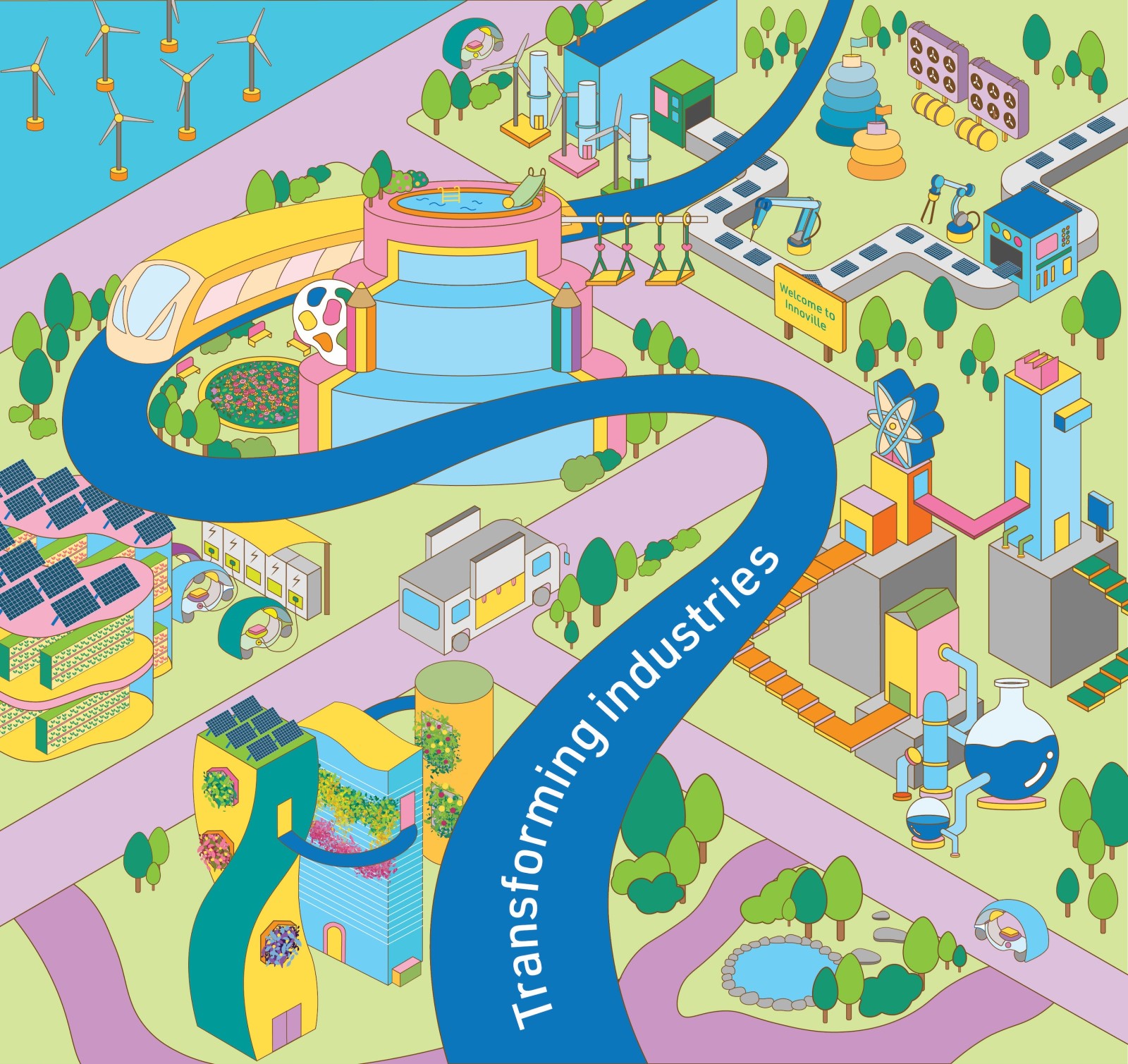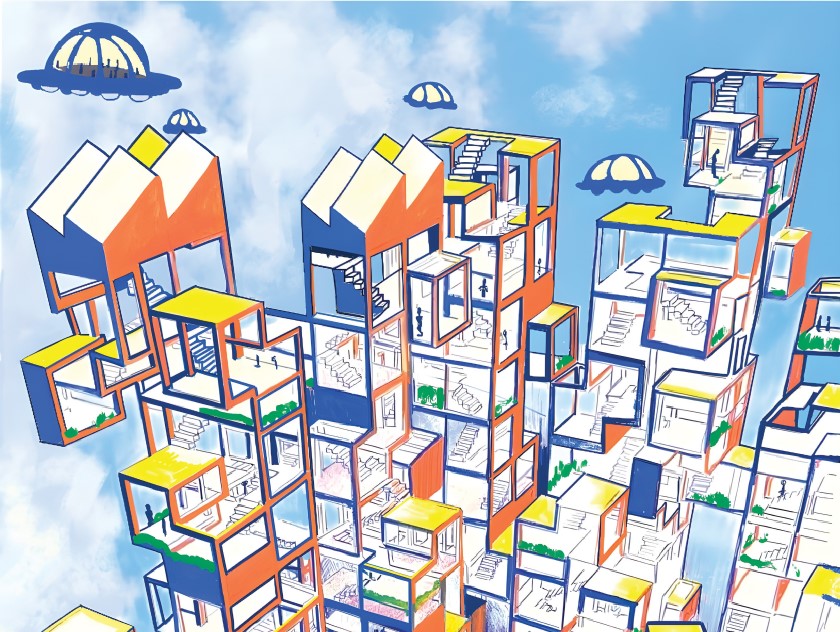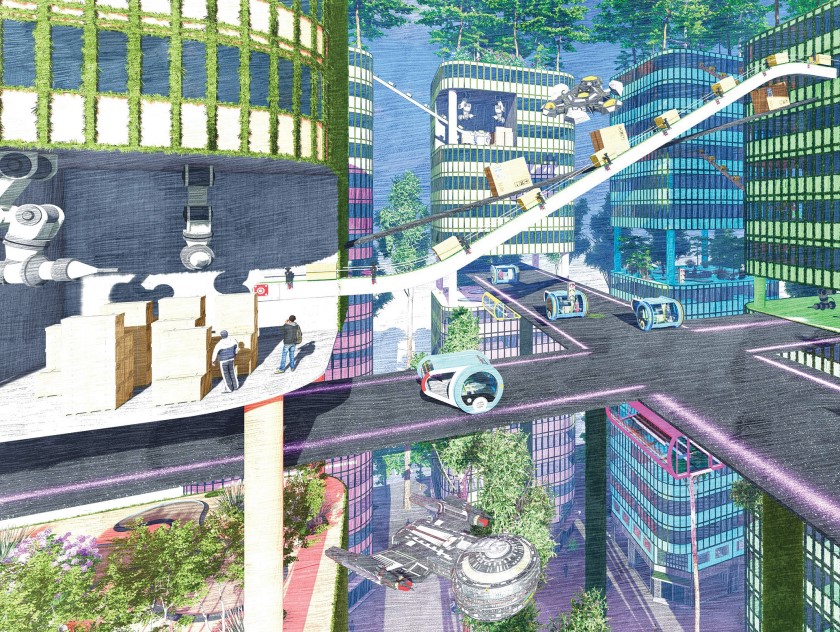Combining the creative flair of students from Nanyang Academy of Fine Arts (NAFA) and the design thinking of architecture students from National University of Singapore (NUS), we present youthful visions of industrial estates of the future.
A future where all is harmoniously integrated — be it work and play, or nature and modernity.
Imagining life beyond 2050 requires immense trust in generations that lead up to it and an ambition far greater than we might currently have.
As the world pushes for net zero emissions, we see the talent, capital and passion being poured into this endeavour. Yet more often than not, industries are progressing with their individualistic mission to reduce and offset emissions within their own sector. Can technology keep up with the pace at which our climate is changing? Can we solve the world’s problems by working in silos?
We propose that industries must unite to meet climate goals before it is too late. As a result, industrial estates will also take on a new outlook: estates will see an integration of different industries and technologies so as to deliver maximum impact. As the industrial estate of the future homes, multiple sectors, cross-industry meeting spaces and event halls would be included into the hub to promote business partnerships and technological advancements.
The industrial estate of 2050 would also be entirely powered by a combination of renewable energy sources. The free energy of the sun and wind could be harnessed through a decentralised power system, where each industrial building or zone can sustainably power itself. With hope, nuclear fusion should be economically viable by 2050, and the estate’s energy capacity can be easily upscaled by having a modular toroidal fusion reactor — just like stacking rings on a stick. Carbon capture, utilisation and storage systems should also be incorporated into the estate in order to continually offset emissions. Put together, these solutions could create industrial estates that are sustainable, resilient and reliable — qualities that will appeal to a wide range of industries, from chemical and biosynthetic processing, modern precision manufacturing and even to agriculture.
We also foresee fully automated processes: food could be produced in hygienic, hands-free and cost-effective vertical farms. Synthesis of chemicals and organic substances could be autonomously controlled to reduce human exposure. Precision materials and instruments could be efficiently manufactured by means of an optimised production line. All of these could be controlled through a system wirelessly connected to an integrated command centre and office, managed by skilled workers who are equipped to operate, maintain and diagnose arising issues.

The estate offices are located centrally and adjacent to an integrated work-and-leisure hub. Work-life balance would be a given by 2050; food, leisure and exercise options would be plentiful for the average estate worker during or even after working hours. Extended amenities such as childcare services, business suites and tech-services would also be incorporated into the hub to bring a full city-living experience into the estate.
We also foresee that climate change impacts would reshape the way we live in 2050. With land scarcity and rising sea levels, we foresee the establishment of marine-based estate zones. This expansion into the sea via an integrated network of floating and submerged marine estates could be sites for nurturing marine cultivation, such as seaweed farming and sustainable seafood, to help in the sustainable substitution of other food sources that are depleting. The proven success of the marine estates can also reaffirm the feasibility of water-bound living in the unfavourable outcome of sea encroachment.
By looking beyond boundaries, be in spatial use or differences that separate industries, we can build a future-proof industrial estate for 2050 and even beyond.
Looking Beyond Boundaries is by Monica Tan Mei Yee (Diploma in Graphic Communication, NAFA) and Yin Pa Pa Soe (Department of Architecture, NUS).
The story and artwork first appear in 'Dream Factories', a publication by JTC that presents the transformation journey of our industrial estates. To read the rest of the publication, click here.


